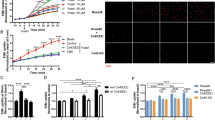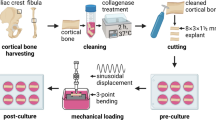Abstract.
A wound-generated steady electric current was measured by a two-dimensional vibrating probe system in the metatarsal bones of 22 adult frogs (Xenopus laevis) placed in amphibian Ringer. Inward currents were recorded entering a micrometric hole drilled through the cortex at middiaphyseal level. These steady state currents (mean ± SD 8.50 ± 2.77 μA/cm2) last approximately 2 hours, were dependent on the presence of sodium in the incubation medium, were no more detectable after fixation, and were reduced to background level when the cell membranes were solubilized. These results agree with previous recordings of metatarsal bones of weanling mice, under identical conditions. Both results suggest that the measured ionic currents have a cellular origin. Metatarsal bones of adult amphibian were purposely selected for this study because, unlike mammalian bones, their shafts are avascular and only contain an osteocyte-bone lining cell system, as documented by scanning and transmission electron observations. Thus, unlike the data from previous investigations on mammals, the results succeeded in giving the first convincing evidence that the osteocyte-bone lining cell system is the origin of damage-generated ionic currents. As damage exposes bone ionic compartment to plasma, damage-generated ionic currents are representative of ion fluxes at bone plasma interface, and cells at the origin of the current generate the driving force of such fluxes. By demonstrating that osteocytes and bone lining cells are at the origin of the current, this study suggests that the osteocyte-bone lining cell system, though operating as a cellular membrane partition, regulates ionic flow between bone and plasma. Since strain-related adaptive remodeling could also depend on ionic characteristics and flow of the bone fluid through the osteocyte lacuno-canalicular network, the results reported here support the view that osteocyte and bone lining cells may constitute a functional syncytium involved in mineral homeostasis as well as in bone adaptation to mechanical loading.
Similar content being viewed by others
Author information
Authors and Affiliations
Rights and permissions
About this article
Cite this article
Rubinacci, A., Villa, I., Dondi Benelli, F. et al. Osteocyte-Bone Lining Cell System at the Origin of Steady Ionic Current in Damaged Amphibian Bone. Calcif Tissue Int 63, 331–339 (1998). https://doi.org/10.1007/s002239900536
Issue Date:
DOI: https://doi.org/10.1007/s002239900536




